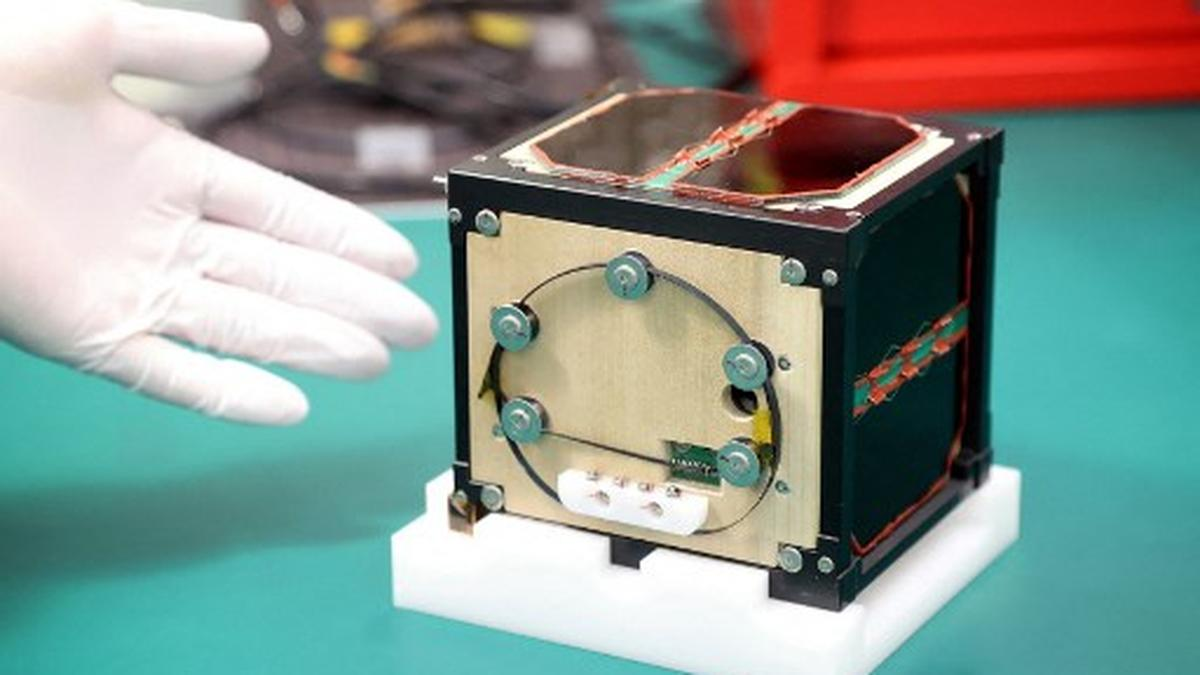- Courses
- GS Full Course 1 Year
- GS Full Course 2 Year
- GS Full Course 3 Year
- GS Full Course Till Selection
- Answer Alpha: Mains 2025 Mentorship
- MEP (Mains Enrichment Programme) Data, Facts
- Essay Target – 150+ Marks
- Online Program
- GS Recorded Course
- Polity
- Geography
- Economy
- Ancient, Medieval and Art & Culture AMAC
- Modern India, Post Independence & World History
- Environment
- Governance
- Science & Technology
- International Relations and Internal Security
- Disaster Management
- Ethics
- NCERT Current Affairs
- Indian Society and Social Issue
- NCERT- Science and Technology
- NCERT - Geography
- NCERT - Ancient History
- NCERT- World History
- NCERT Modern History
- CSAT
- 5 LAYERED ARJUNA Mentorship
- Public Administration Optional
- ABOUT US
- OUR TOPPERS
- TEST SERIES
- FREE STUDY MATERIAL
- VIDEOS
- CONTACT US
LignoSat: World's First Wooden Satellite Set for Launch
LignoSat: World's First Wooden Satellite Set for Launch
31-05-2024

Japanese researchers have successfully built the world's first wooden satellite, a development in space technology that aims to reduce space debris and promote sustainability.
Key Points:
- Material: Constructed primarily from magnolia wood, the satellite has been named LignoSat.
- Dimensions: The cuboid satellite is relatively small, with each side measuring 10 centimetres (4 inches).
- Environmental Impact: The wooden material is expected to burn up completely upon re-entry into Earth's atmosphere, potentially mitigating the issue of space debris and minimising the generation of harmful metal particles.
- Launch: LignoSat is scheduled to be launched into space on a SpaceX rocket in September 2024, bound for the International Space Station (ISS).
- Testing: The satellite will be deployed from the Japanese ISS experiment module to assess its strength, durability, and resistance to extreme temperature fluctuations.
- Future Implications: Successful testing could lead to wider adoption of non-metal materials in satellite construction, promoting a more sustainable approach to space exploration.
- Additional Launch: Coincidentally, on the same day as the LignoSat announcement, a collaborative satellite mission between the European Space Agency (ESA) and JAXA was launched to investigate the role of clouds in climate change.
Additional points:
- The development of LignoSat involved collaboration between scientists at Kyoto University and the logging company Sumitomo Forestry.
- Astronaut and Kyoto University professor expressed optimism about the future of non-metal satellites, stating that they "should become mainstream."
- The successful launch and testing of LignoSat could pave the way for innovative solutions to address the growing problem of space debris.



